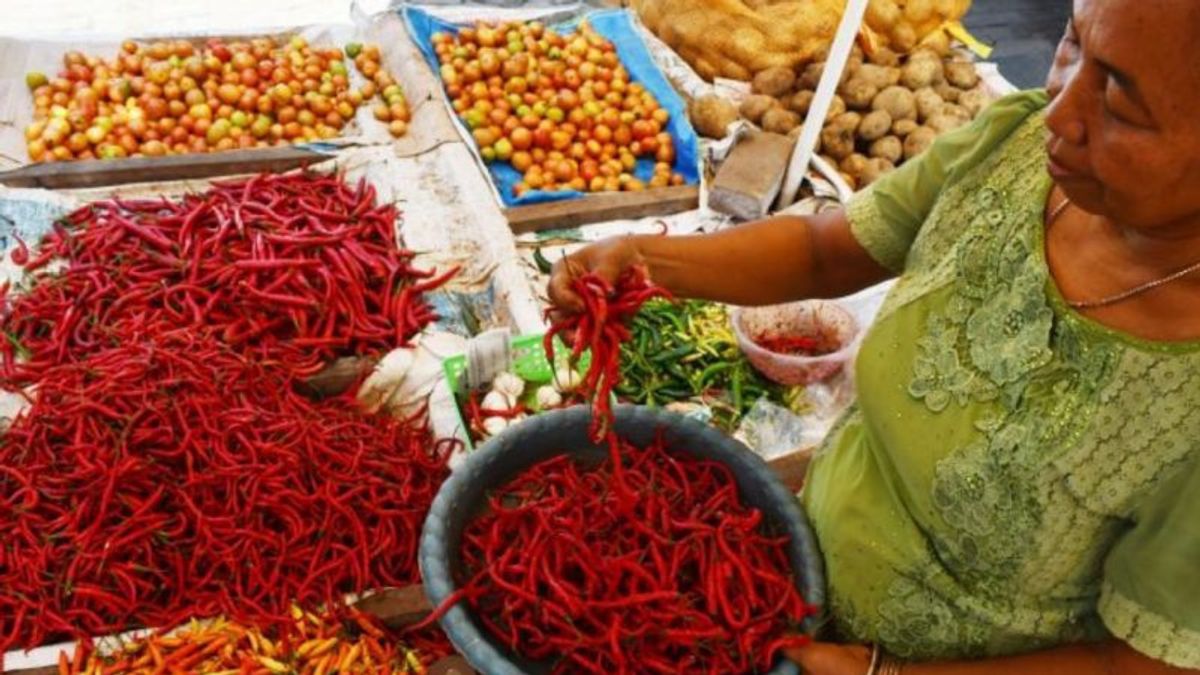SURABAYA - The East Java Provincial Government continues to make various efforts to keep chili production running. The aim is to stabilize the price of cayenne pepper, which is now high in the market.
Based on observations in the field and coordination with the Association of Indonesian Chili Farmers (APCI) in Kediri Regency, East Java Governor Khofifah Indar Parawansa, said there were two reasons for the increase in the price of cayenne pepper. First, high rainfall causes disease attacks on plants.
In lowland areas, continued Khofifah, chili planting should be carried out in April 2022.
"However, due to the high rainfall, it eventually led to a reduction in planting area. Then it resulted in a decline in production and the chili planting schedule experienced a setback," said Khofifah, Tuesday, June 7, 2022.
In addition to the rain factor, the second cause is the attack of Plant Pest Organisms (OPT) on chili commodities. In the April period in East Java, said Khofifah, there were four attacks, namely fruit fly pests covering an area of 32.4 hectares, trips covering an area of 15.55 hectares, and whitefly covering an area of 2.21 hectares.
Meanwhile, the addition of yellow virus disease covering an area of 34.03 hectares, anthracnose covering an area of 12.31 hectares, leaf spot covering an area of 8.4 hectares, and fusarium wilt of 2.5 hectares.
So that pest attacks in several central locations (highlands) can be controlled, Khofifah said that the East Java Provincial Government uses Biological Control Agents.
"Now in several locations new shoots have started to grow, so it is hoped that this will help the availability of cayenne pepper ahead of Eid al-Adha," he said.
Meanwhile, different strategies are applied to overcome the problem of chili commodities in lowland areas. Khofifah asked to immediately plant cayenne pepper using early maturity varieties with a harvest age of 70-80 days, namely the Bhaskoro and Dewata varieties.
"This is expected to support the availability of chili in July, especially before Eid al-Adha," he said.
Even so, Khofifah remains optimistic that efforts to reduce the price of cayenne pepper and large chili prices in East Java can be carried out. In general, the contribution of East Java's strategic horticulture to the nation for large chili commodities is 9.4 percent or ranks fourth nationally.
Meanwhile, cayenne pepper contributed 41.8% or the highest nationally. "Moreover, the potential area for planting large chili commodities in East Java in 2021 will reach 15,398 hectares with production reaching 127,429 tons," he said.
The five highest chili producing districts in 2021 in East Java, namely Malang Regency, Kediri Regency, Blitar Regency, Banyuwangi Regency, and Probolinggo Regency.
According to him, the development of large chili commodities in January-March 2022, namely the planting area reaches 2,525 hectares with production reaching 33,350 tons and consumption of 17,082 tons/capita/year.
Seeing this number, the production of large chili is still a surplus of 16,268 tons. Furthermore, in April it was 63 percent and the prognosis in May showed a large chili planted area of 1,285 hectares with a production target of 11,892 tons, so it is estimated that there will be a surplus of 503 tons.
"So, the need for large chilies in East Java is divided to meet industrial needs by approximately 80 percent and for households by 20 percent of total production," he said.
Based on Siskaperbapo data, chili prices in East Java have increased, the average price for red cayenne pepper as of 7 June 2022 was IDR 84,823 per kilogram, an increase of 241.48 percent (IDR 59,983) compared to the price on 10 May 2022 of IDR 24. 840.
Meanwhile, the average price for large red chilies in East Java as of June 7, 2022, was Rp. 62,144, an increase of 78.58 percent (Rp. 27,346) compared to the price on May 10, 2022, which was Rp. 34,798.
The English, Chinese, Japanese, Arabic, and French versions are automatically generated by the AI. So there may still be inaccuracies in translating, please always see Indonesian as our main language. (system supported by DigitalSiber.id)








